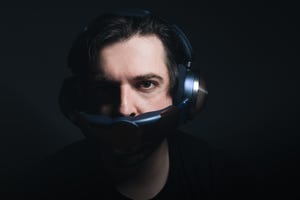
Dyson Zone Headphones: One Month On, Dyson Needs to Make This Change - CNET
Dyson’s Zone headphones are possibly the weirdest thing I’ve tested in my 12 years at CNET. The headphones feature motors in each earcup that power a filtration system built into a detachable face mask. I spent the last month using the system, both at home and outside, and I have some ideas on how Dyson can improve the next generation.
As a set of headphones, I like the Zone. The sound quality is excellent, providing deep bass and crystal-clear highs that suit my preferred genres (metal, mostly) admirably. The noise canceling is great, too, removing the road noise outside my office window and providing a more tranquil experience for me to work in.
But these aren’t just headphones, they’re an entire personal filtration system. The two motors built into each earcup make these headphones exceptionally big and heavy on my head, and the face visor feels weird to wear. I tried using it out and about and I get a lot of weird looks, my glasses fog up and I end up taking it off pretty quickly. I just can’t bring myself to use it in public, despite many people — myself included, often — still wearing COVID-19 face masks in busy areas.

But then, I don’t need to wear the visor. I live in Edinburgh, a relatively clean city where this type of tech just isn’t required. Maybe I’d feel different if I lived in a highly polluted mega city and commuted by foot — or bike — along busy roads every day.
The problem is that the filtration technology can’t be separated from the headphones. You can take the filters out to replace them, and you can remove the visor, but those heavy motors still remain. Every time I go for a walk with these headphones, I still have the motors strapped to my head, despite the fact that I have no intention of using them. And that’s where I think Dyson has gone wrong.
A version that allows you to remove the whole filter system would mean someone like me who just wants the great sound of the headphones, could buy just the headphones. It would make them much more comfortable to wear for long periods when you’re at home, then simply attach the filter system when you’re heading into the city.

It would allow them to be sold separately, making the headphones themselves much more appealing for general music fans. Right now, that whopping $1,000 price tag means that only the wealthiest audiophiles commuting through the biggest cities are going to consider them — and that’s a pretty niche market. Allow the headphones to be bought separately for much less, with a possibility of buying the filters later if you want them? Now we’re talking.
I’m sure this is something Dyson considered during the six years it says it spent developing the Zone headphones, so there’s presumably a good reason why that’s not the product we have. But this first-generation Zone feels exactly that: first-generation. In need of refinements that we’d expect to see in future models.

